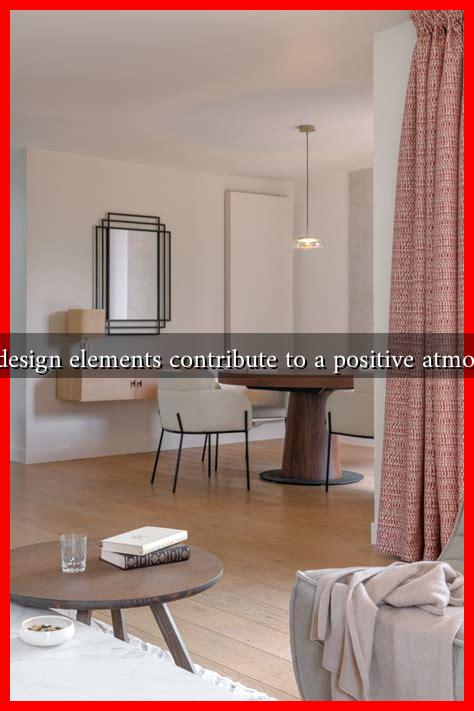-
Table of Contents
What Design Elements Contribute to a Positive Atmosphere
Creating a positive atmosphere in any space—be it a home, office, or public area—relies heavily on thoughtful design elements. These elements can influence mood, productivity, and overall well-being. In this article, we will explore various design components that contribute to a positive atmosphere, supported by examples, case studies, and relevant statistics.
The Power of Color
Color plays a crucial role in shaping our emotions and perceptions. Different colors can evoke various feelings and responses. For instance:
- Blue: Often associated with calmness and serenity, blue can help reduce stress and promote a sense of peace.
- Yellow: This color is linked to happiness and energy, making it an excellent choice for creative spaces.
- Green: Symbolizing nature, green can create a refreshing and revitalizing atmosphere, often used in wellness centers and offices.
According to a study by the Institute for Color Research, people make a subconscious judgment about a person, environment, or product within 90 seconds of initial viewing, and between 62% and 90% of that assessment is based on color alone. This highlights the importance of color selection in design.
Natural Light and Ventilation
Natural light is another critical element that contributes to a positive atmosphere. Studies have shown that exposure to natural light can enhance mood, increase productivity, and improve overall health. For example:
- A study by the University of Illinois found that employees with access to natural light reported a 51% drop in eyestrain, a 63% drop in headaches, and a 56% drop in drowsiness.
- Incorporating large windows or skylights can significantly improve the quality of light in a space, making it feel more open and inviting.
Moreover, proper ventilation is essential for maintaining air quality. Spaces that are well-ventilated can reduce the risk of airborne diseases and enhance cognitive function. A study published in the journal Environmental Health Perspectives found that improved ventilation in office spaces led to a 20% increase in productivity.
Furniture and Layout
The arrangement of furniture and the choice of furnishings can significantly impact the atmosphere of a space. Here are some considerations:
- Comfort: Comfortable seating encourages relaxation and social interaction. Ergonomic furniture can enhance productivity in workspaces.
- Flexibility: Modular furniture allows for adaptable layouts, catering to different activities and group sizes.
- Flow: An open layout can facilitate movement and communication, while designated areas for specific activities can help maintain focus.
For instance, Google’s office designs often feature open spaces with comfortable seating arrangements that encourage collaboration and creativity. This design philosophy has been linked to increased employee satisfaction and productivity.
Biophilic Design
Biophilic design incorporates natural elements into built environments, fostering a connection to nature. This approach can significantly enhance the atmosphere of a space. Key elements include:
- Indoor Plants: Incorporating greenery can improve air quality and reduce stress levels.
- Natural Materials: Using wood, stone, and other natural materials can create a warm and inviting environment.
- Water Features: The sound of flowing water can have a calming effect, making spaces feel more serene.
A study published in the journal Building and Environment found that biophilic design elements can lead to a 15% increase in well-being and a 6% increase in productivity.
Conclusion
In conclusion, the design elements that contribute to a positive atmosphere are multifaceted and interconnected. From the psychological impact of color to the benefits of natural light, furniture arrangement, and biophilic design, each component plays a vital role in shaping our experiences within a space. By thoughtfully integrating these elements, designers can create environments that not only look appealing but also enhance well-being and productivity. As we continue to understand the importance of our surroundings, investing in thoughtful design becomes essential for fostering positive atmospheres in our daily lives.

